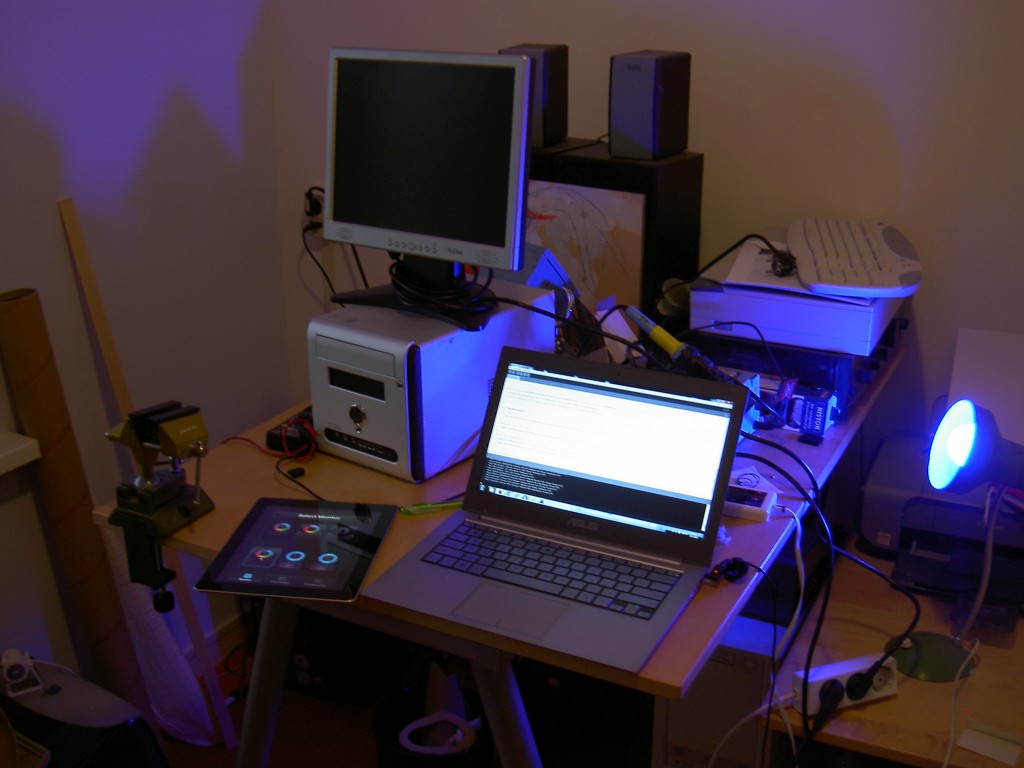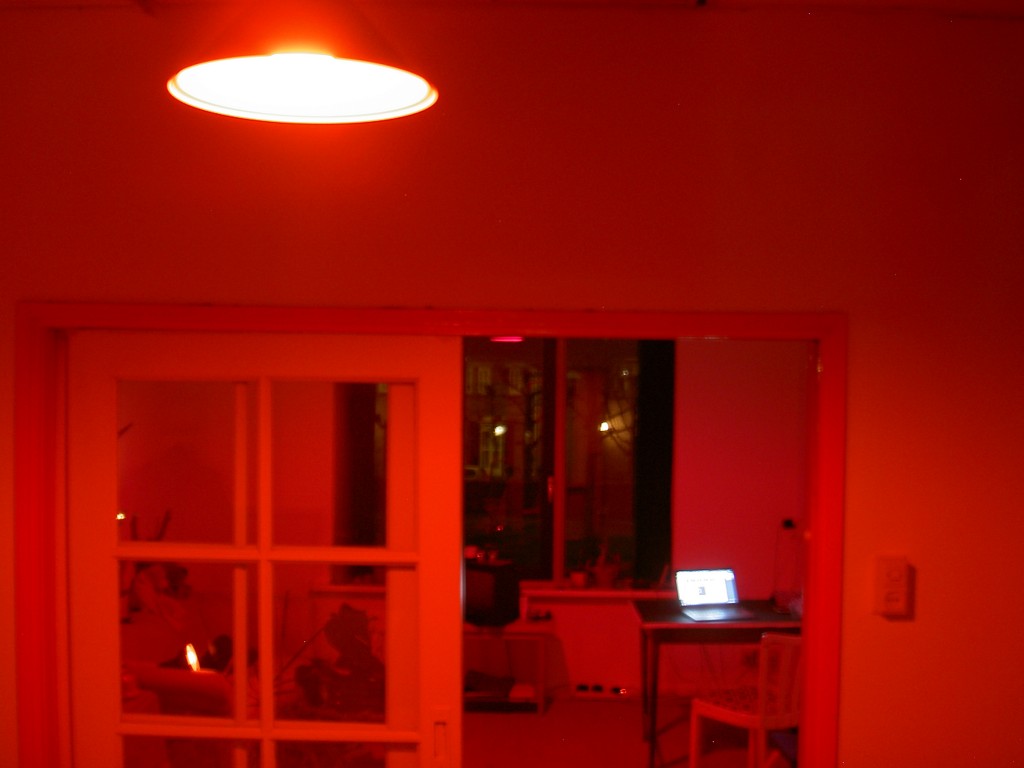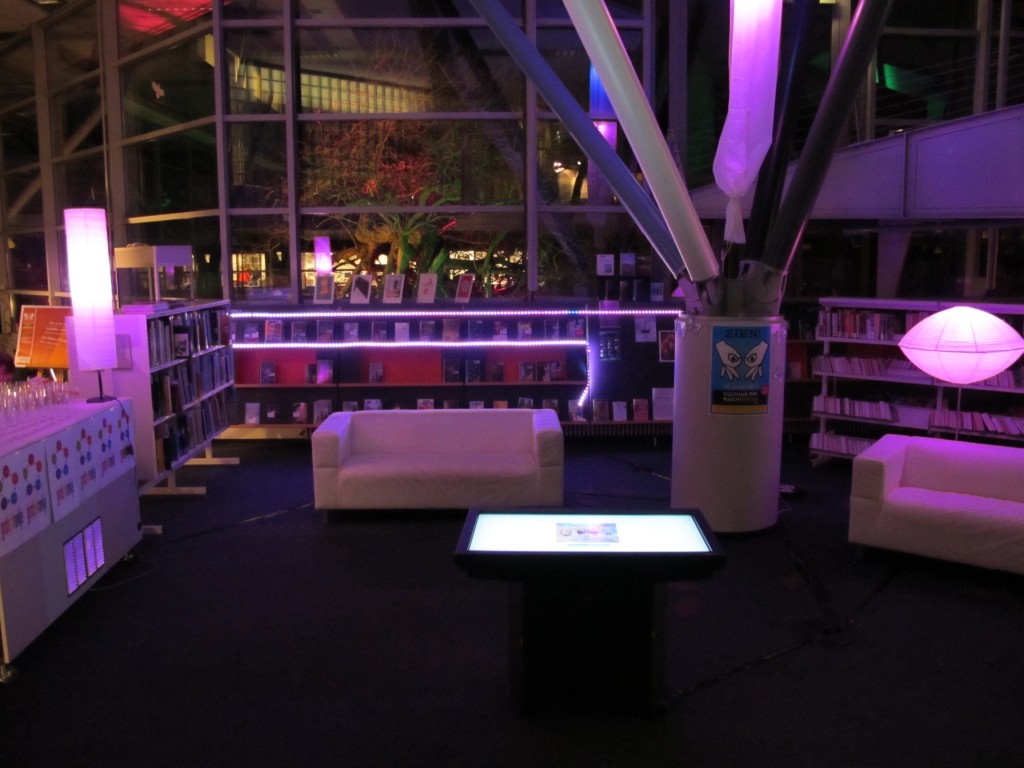The past couple of weeks I’ve been working on an assignment for the municipal library. The task was to let people present their views on the library of the future. To that end we created an area with seats, a bar, a touch table and lights. By touching a picture on the screen visitors could select a different atmosphere and actually change that by at the same time changing the colour of the lights. The choices of the visitors were logged in a file. This installation was presented during the Cultuurnacht (culture night) in the city of Breda, the Netherlands.
My task was to make the interactive application and drive the lights. I’ve wanted to experiment with interactive lighting so I can apply it in my Hermitage 3.0 project. So for me it was a great opportunity to learn about it. And learn I did.
My idea was to work with the Philips Hue. They have a great API and an active community. But due to budgetary restrictions I had to work with an alternative: Applamp, also known as Milight. The concept is the same: a wifi connected bulb can change colour and brightness by sending code to a local server port generated by a small wifi box. Applamp also has a phone app to work with the lights and a very basic API.
I had wanted to start working on the application before Christmas but this ideal scenario didn’t work out. The bulbs arrived mid January… The first task was to connect to the lights using the app. It appeared that my Android phone was too old for the app to work. So I had to borrow my neighbours’ iPad. The bulbs can be programmed into groups but you have to follow the steps in communicating with the lights otherwise it won’t work.
Once the bulbs were programmed I thought it would be easy to set up a simple program switching a bulb on and off. I’d found a nice Python API and some other examples in different languages. Non in Java or Processing though. I’ve used Processing because I wanted a nice interface with pictures, a full screen presentation and log the actions to a file.
I tried and tried but the UDP socket connection wasn’t working. So the biggest thing I learned was to do with network. I received a lot of help from Ludwik Trammer (Python API) and Stephan from the Processing forum. The latter finally managed to retrieve my local IP address and the port for the Milight wifi box, which was all I needed. (You actually don’t need the precise port, sending it to .255 is good enough.) The light technician Jan showed me a little app called Fing that makes it super easy to get insight into all the things connected to your local IP.
In Processing I wrote the interaction making sure that no buttons could be pressed while the program was driving the bulbs. There should be at least 100 ms between the different commands you send to the bulbs. This made the program a bit sluggish. But if the commands are send to quickly it doesn’t reach the bulbs and the colour doesn’t change. I had to fiddle around with it to get it stable. But the settings in my home weren’t optimal for the library. Alas there was not enough time to experiment with it there. So it wasn’t perfect but people got the idea.
This is a snippet of the program in Processing:
// import UDP library
import hypermedia.net.*;
UDP udp; // the UDP object
int port = 8899; // new port number
String ip = "xx.xx.xx.255"; // local ip address
int[] colourArray = {110, -43, -95, 250, 145};
int currentAtmosphere = -1;
void setup(){
udp = new UDP(this, port);
startState = true;
RGBWSetColorToWhiteGroup1();
}
void mouseClicked(){
currentAtmosphere = 1;
RGBWSetColor(byte(colourArray[currentAtmosphere]), false);
}
void RGBWGroup1AllOn(){
udp.send(new byte[] {0x45, 0x0, 0x55}, ip, port);
}
void RGBWSetColorToWhiteGroup1(){
RGBWGroup1AllOn(); // group on
myDelay(100);
udp.send(new byte[] {byte(197), 0, 85}, ip, port); // make white
udp.send(new byte[] {78, 100, 85}, ip, port); // dim light
}
void RGBWSetColor(byte hue, boolean tryEnd){
RGBWGroup1AllOn();
myDelay(100);
udp.send(new byte[] {0x40, hue, 0x55}, ip, port); // send hue
myDelay(100);
if(tryEnd){
udp.send(new byte[] {78, 100, 85}, ip, port); // dim light
}
else{
udp.send(new byte[] {78, 59, 85}, ip, port); // full brightness
}
}
Another thing that’s puzzling is the hue value that has to be send. As all the codes send to the bulbs should be in byte size the hue must be a value between 0 and 255. The hue scale of course is from 0 to 360 degrees. I’ve figured out how they are mapped but found out by just trying all the values from 0 to 255.
I’m happy to say that the installation was a success. People thought it was fun to work with it and I had some nice insights into peoples idea’s for the library of the future. The final presentation could have been more subtle. But that’s something for next time.


